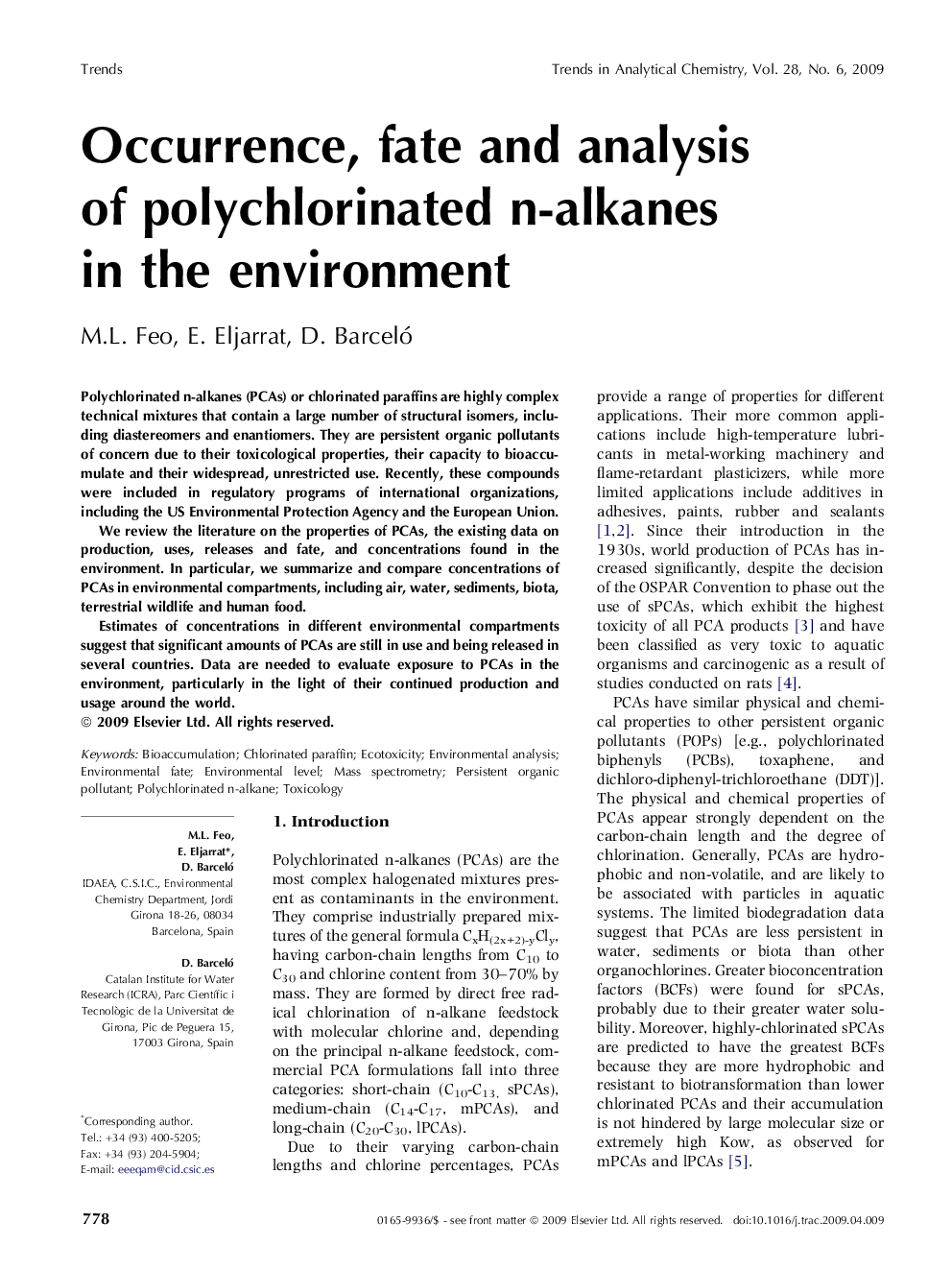| Article ID | Journal | Published Year | Pages | File Type |
|---|---|---|---|---|
| 1248355 | TrAC Trends in Analytical Chemistry | 2009 | 14 Pages |
Polychlorinated n-alkanes (PCAs) or chlorinated paraffins are highly complex technical mixtures that contain a large number of structural isomers, including diastereomers and enantiomers. They are persistent organic pollutants of concern due to their toxicological properties, their capacity to bioaccumulate and their widespread, unrestricted use. Recently, these compounds were included in regulatory programs of international organizations, including the US Environmental Protection Agency and the European Union.We review the literature on the properties of PCAs, the existing data on production, uses, releases and fate, and concentrations found in the environment. In particular, we summarize and compare concentrations of PCAs in environmental compartments, including air, water, sediments, biota, terrestrial wildlife and human food.Estimates of concentrations in different environmental compartments suggest that significant amounts of PCAs are still in use and being released in several countries. Data are needed to evaluate exposure to PCAs in the environment, particularly in the light of their continued production and usage around the world.
